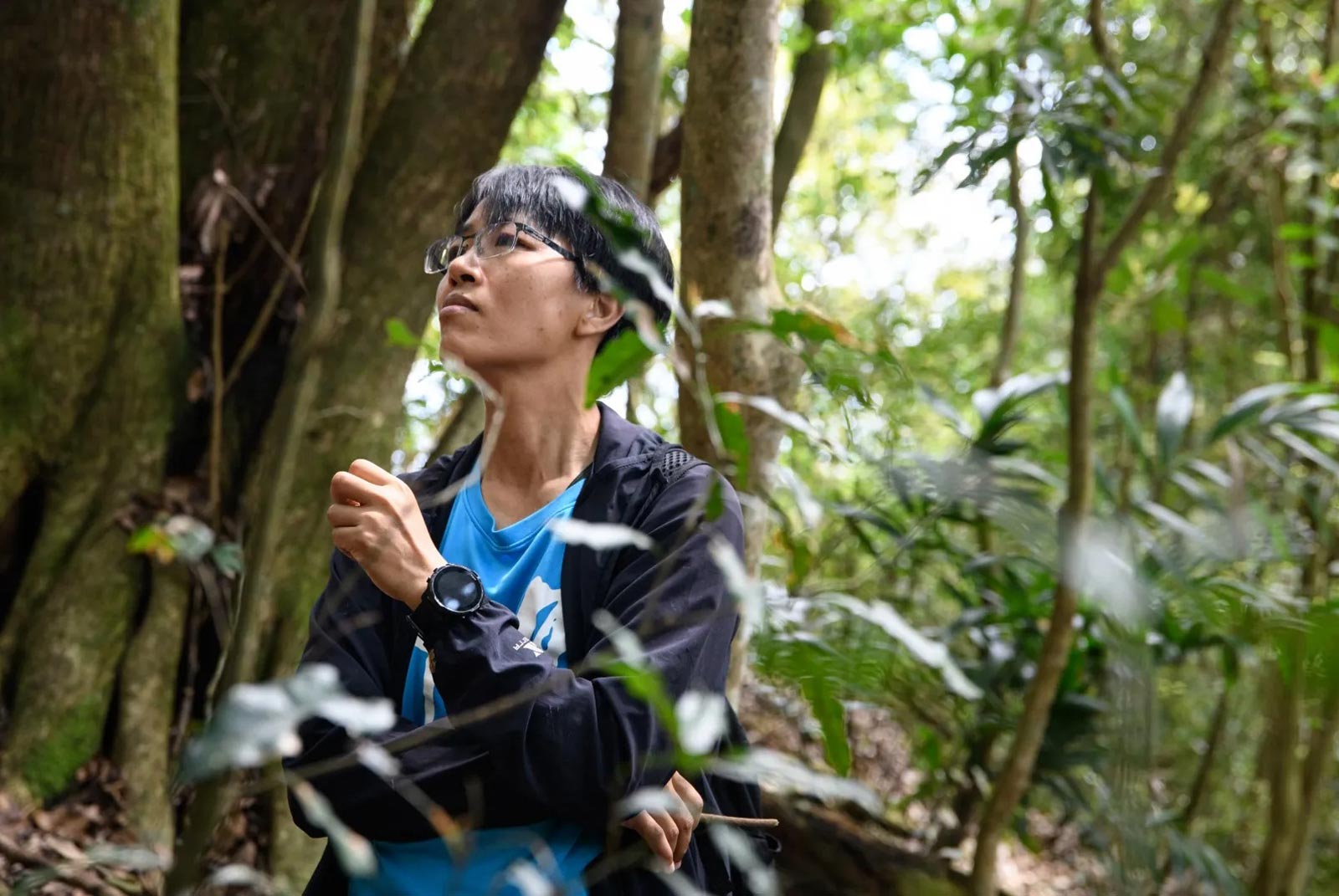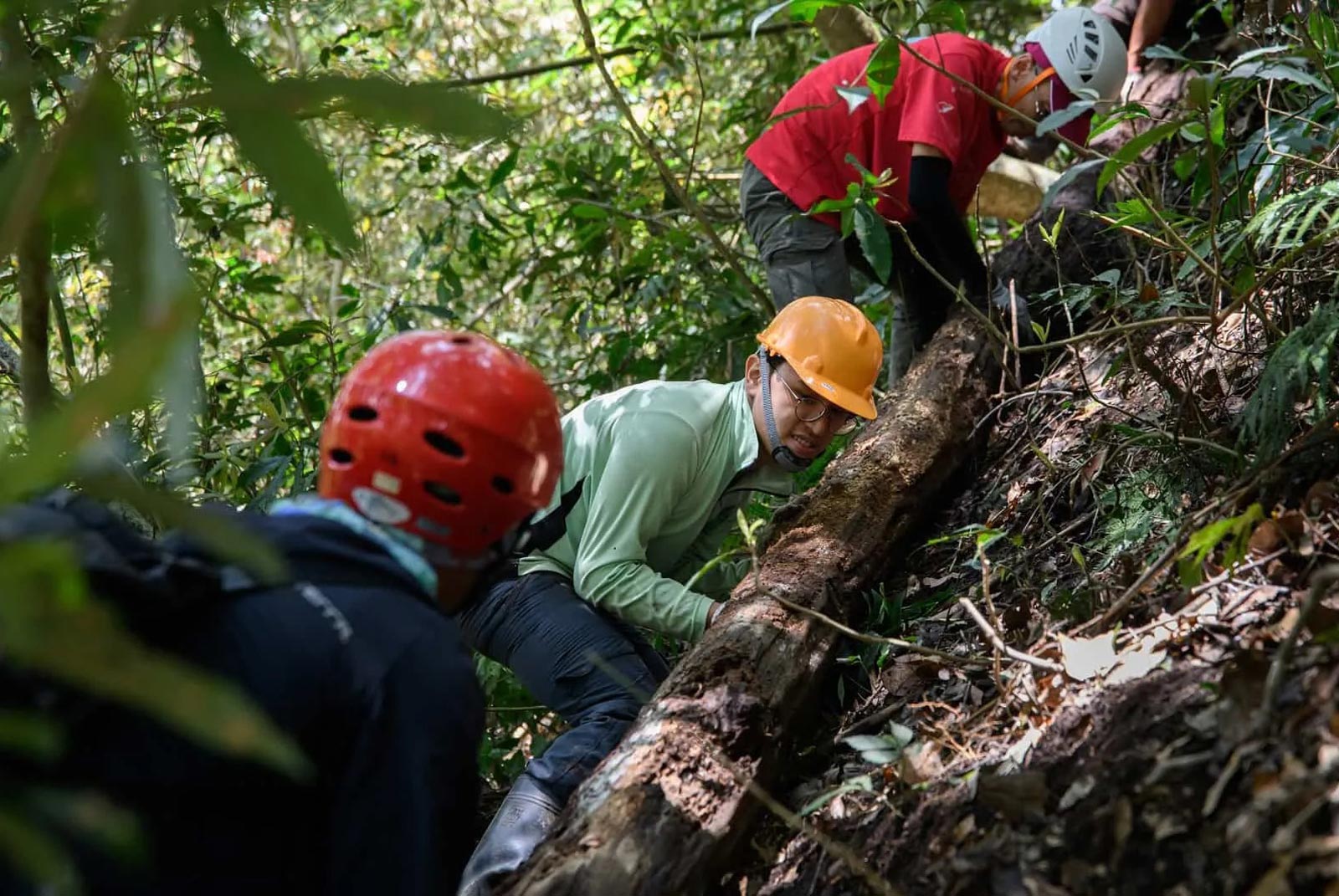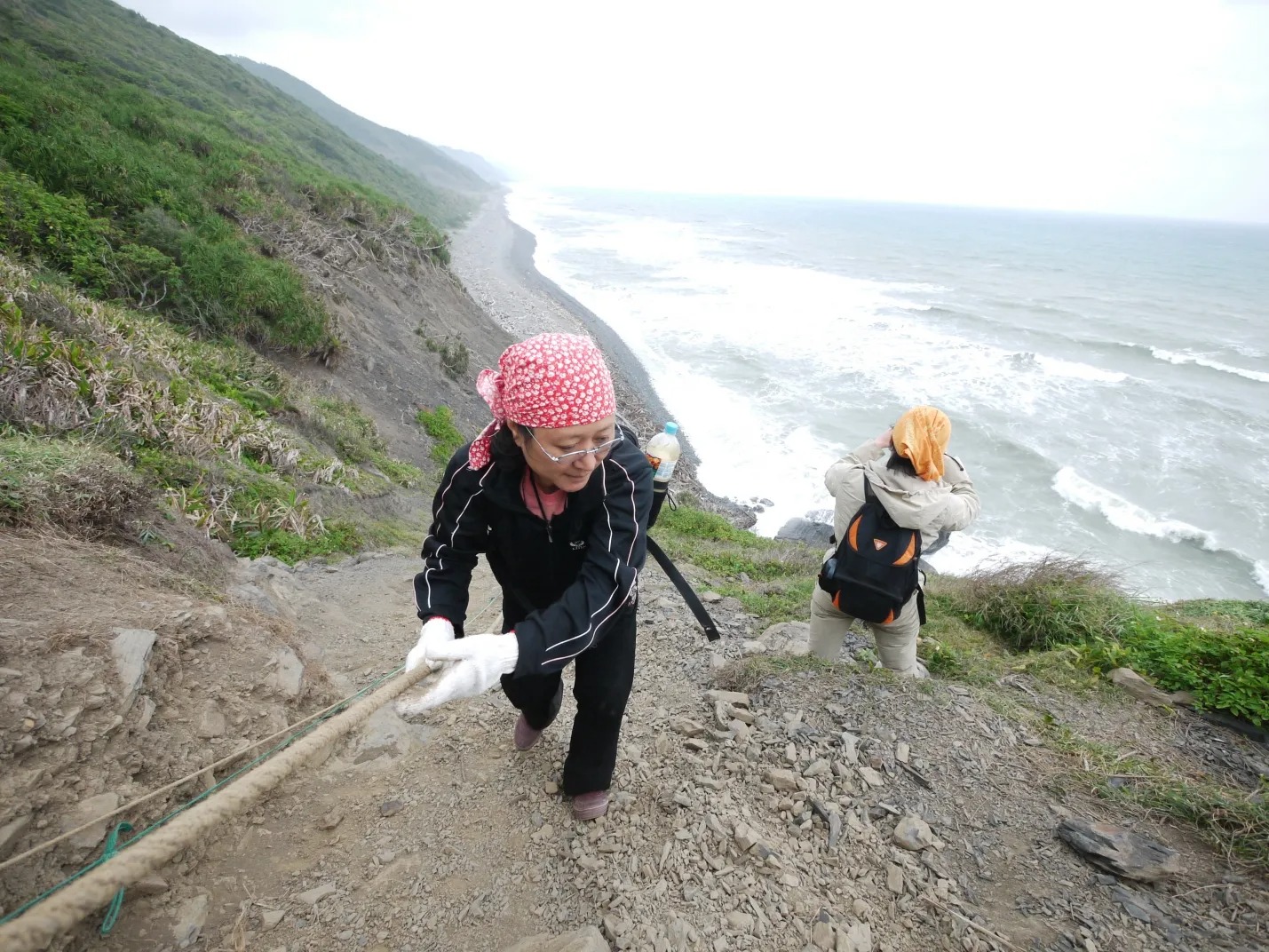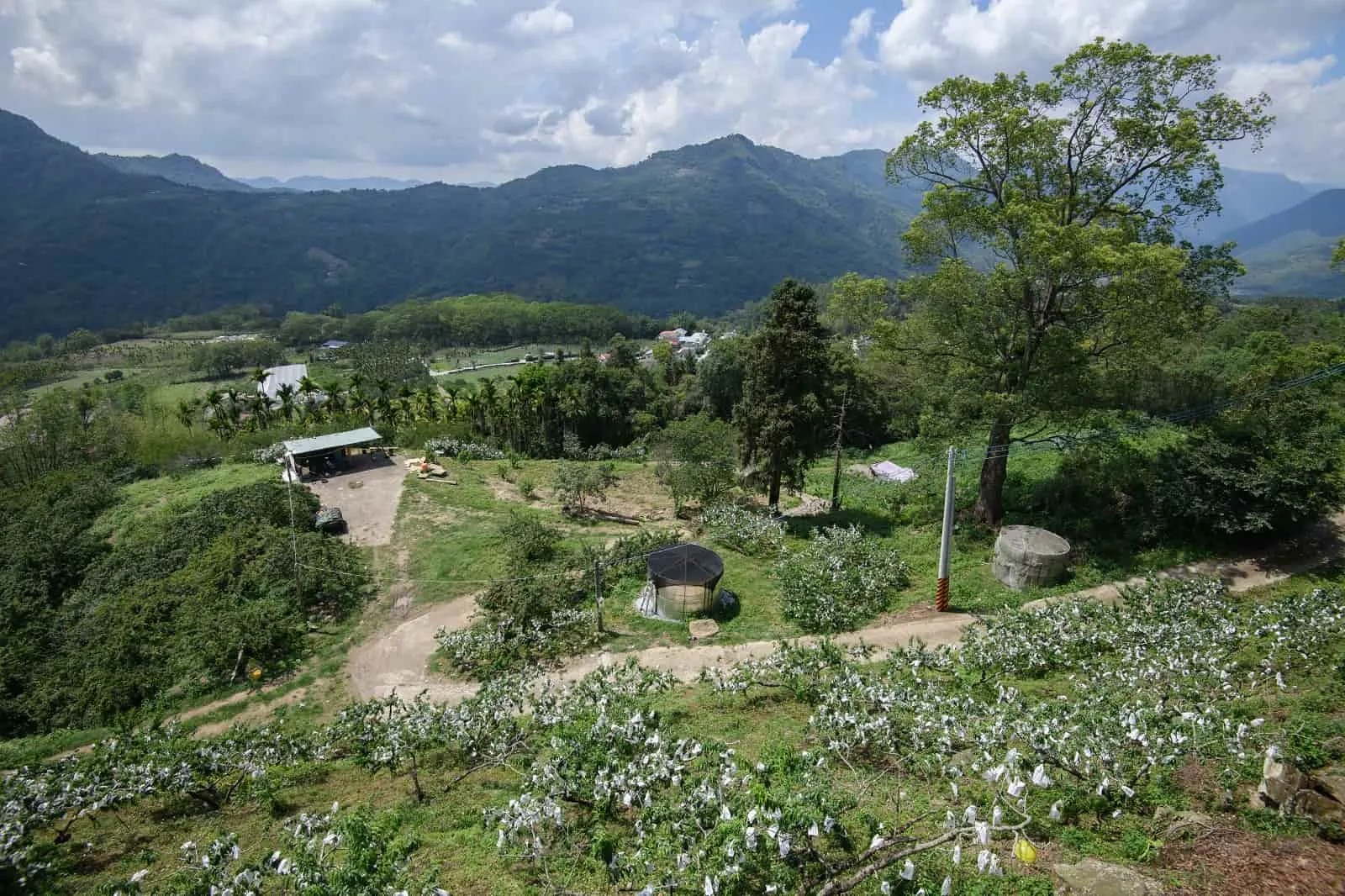Taiwan's TMI Trail Paves a Greenway Across the Country

Source:Pei-Yin Hsieh
A marvelous green trail, hundreds of miles long, is being built with manual labor and old-fashioned wooden materials instead of steel and cement. The nonprofit TMI Trail is asking for people's help to rebuild the Danlan Old Trail, so that we may reconnect with the arteries that vitalized our island economy.
Views
Taiwan's TMI Trail Paves a Greenway Across the Country
By Chenjou OuyangFrom CommonWealth Magazine (vol. 775 )
At the break of dawn, a four-wheel-drive pickup truck wound its way up a steep incline. When the vehicle ran out of road, its occupants climbed out and proceeded on foot. The day's work was just beginning.
The entire group wore protective headgear. They carried tools, cut the grass, moved wooden pieces, and hammered stakes into the soil between the lush grass and trees.
This is a slice of life from the "Trail Volunteer Working Holiday" program hosted by the Taiwan Thousand Miles Trail Association (台灣千里步道協會), also known as TMI Trail for short.
Since 2007, through the above-mentioned method of gathering dozens of volunteers to build sections of roads for two to three days at a time, the Association has already completed 170 trails all over Taiwan. Even national park-level trails, such as the Mountains to Sea Greenway (山海圳), Danlan Old Trail (淡蘭古道), and Raknus Selu Trail (樟之細路), were "handcrafted" in this environmentally friendly way.
Without the support of heavy machinery, how were the volunteers and suppliers able to construct a network of "greenways" across the country, using only natural materials and manual labor?
 Compared to the volunteer brigade with fixed members, it is open for enrollment every working holiday, which can reach more people and spread the influence. (Source: Pei-Yin Hsieh)
Compared to the volunteer brigade with fixed members, it is open for enrollment every working holiday, which can reach more people and spread the influence. (Source: Pei-Yin Hsieh)
"We wanted to rediscover our society's vitality and use it to build a model of civic participation," says Hsu Ming Chien (徐銘謙), Deputy Chief Executive Officer of TMI Trail.
In the past, she joined protests that fought for the government to preserve the historic trails of Taiwan. But the impact of individual protests was limited.
In 2006, Hsu hiked the Appalachian Trail in the United States and learned how to build trails by hand. That same year, TMI Trail was founded with the aim to build a network of "greenways" across the island, in order to avoid the problem of heavy construction disturbing the peace of forests and mountains in Taiwan.
Volunteer: It's like a shot of "feel-good"
Hsu points out that these trails had a deep connection with the local residents in the past. In order to trade tea and camphor, the inhabitants of the mountains forged their own paths.
But as the years went on, such endeavors became the purview of government administrators and the construction firms that they hired. The trails lost their link to local life. The modern, cement-based constructions were also a burden on the environment. And even if the local communities tried to build their own pathways, their lack of resources and expertise may cause more problems, such as a trail paved with used tires.
 Many volunteers are willing to pay out of their own pockets to participate in this special experience, as they often go to places that are normally difficult to reach during their working holidays, such as the Alang Yi Trail pictured here. (Source: Commonwealth Magazine)
Many volunteers are willing to pay out of their own pockets to participate in this special experience, as they often go to places that are normally difficult to reach during their working holidays, such as the Alang Yi Trail pictured here. (Source: Commonwealth Magazine)
TMI Trail became the impetus for promoting change. It is environmentally conscious, loaded with know-how—and most importantly of all, it has developed a long-term co-working relationship with the government.
In 2007, TMI Trail worked with the Forestry Bureau to host the first working holiday program on the Syakaro Historical Trail (霞喀羅古道) in Hsinchu County. The program included in-depth guided tours and hands-on working experiences.
"It's like a shot of feel-good," says volunteer Lo Chih-fan (羅秩帆).
Thanks to the program, she visited aboriginal tribes she had never seen before. She feasted, danced, and participated in rituals with the indigenous people.
Volunteers poured in from all over. They asked for nothing but a chance to work hard to improve the environment. The surge of positivity touched Lo deeply.
Coincidentally, Lo found a chance to explore her own roots. While participating in the restoration of the Raknus Selu Trail, Lo found out that she was distantly related to Lo Shih-lung (羅仕龍), manager of Lo Family Traditional School (羅屋書院), a co-sponsor of the project. She realized her ancestors might have hailed from the area. "When I realized I was restoring the paths walked by my ancestors, I became even more emotionally invested."
In 2013, TMI Trail worked with community colleges to open courses on "the study of trails." In tandem with the working holidays, they laid the foundation for the network of hand-built pathways.
"This is one of the very few instances of a successful campaign in Taiwan that improves the relationship between man and nature while also having a real societal impact," says Thung-Hong Lin (林宗弘), Research Fellow at the Institute of Sociology, Academia Sinica. He elaborates that in the past, a road without rebars and concrete would not have been considered a road at all. But the working holiday programs have changed people's minds and brought nature lovers together from around the country.
Participants also pay it forward and return to their homes with the right mindsets and attitudes. And so, the movement grows.
Ultimately, it comes down to cooperation between municipal governments and local organizations to connect the hundreds of miles of green pathways across the country.
In 2016, TMI Trail gathered the municipal leaders of Taipei, New Taipei, Keelung, and Yilan to hold a press conference, in which the four cities vowed to restore the century-old Danlan Old Trail. Afterwards, the four city governments took turns hosting the meetings, for a total of four meetings every year.
The actual work of constructing the mountain trail was divided among the volunteers of the working holiday programs and the contractors that worked for the city governments. But the prerequisite was that everything had to be hand-built. TMI Trail acted as the consultant for the contractors who were tasked with restoring the historic road.
 (Source: Pei-Yin Hsieh)
(Source: Pei-Yin Hsieh)
The Raknus Selu Trail was a different story. While the construction of the road was nearly complete, the Hakka Affairs Council that was spearheading the effort and the local governments had yet to establish a way to work together across districts. TMI Trail invited six local organizations along the route to stand in as service centers and held advisory meetings every month.
"When you form an alliance, different locations become connected as one," says Hsu.
The way is clear when funding is a non-issue
Certainly, some minds were harder to convince. For example, one of the service centers was the Ginger Garden in Miaoli, an archetypical upscale leisure farm. It has a lot of experience applying for government funding to promote tourism. Part of the Raknus Selu Trail was very steep and needed to be rerouted. The Ginger Garden expected to receive funding to build a cement road, as it had done in the past.
For the sake of the environment, TMI Trail recommended building the path by hand. Earlier this year, TMI Trail worked with the Taya Group's Green Inside Foundation (大亞電纜美麗家園基金會) to host two sessions of working holidays over a period of three days. They led volunteers to learn about the area and built a Z-shaped trail to make the sharp incline navigable.
 (Source: Pei-Yin Hsieh)
(Source: Pei-Yin Hsieh)
Liu Ying-ke (劉盈科), the 80-year-old director of the Ginger Garden, never expected to see volunteers from all over come to work for his community for free on the holidays. "Construction work takes time and money, and power shovels can make quite a mess. A hand-built trail does not destroy the environment, and it's safe and easy to walk, so now we have more visitors!" he says.
"If you ask me how Taiwanese society has changed over the years, I would say that the way of thinking has advanced," says TMI Trail chairwoman Chou Sheng-hsin (周聖心).
She and Hsu have been sisters-in-arms for a long time. She recalls that a dozen years ago, when the Association advocated the separation of vehicle and foot traffic on Taiwan's roads, as well as permission for bicycles to board trains, the government was baffled by those proposals. But now these perks are a fact of life. Popular opinion has helped the government to move forward.
"A good trail speaks for itself," says Hsu. From the very beginning, when skeptics derided their knowledge of road-building, to further along the way, when the series of volunteer programs overthrew the established practice of hiring construction companies to pave roads, TMI Trail has reconnected paths and people, and it has demonstrated the power of civic participation.
Have you read?
- Taiwan’s Pilgrimage of Nature
- Waterfall wonderland: Finding the falls of Yangmingshan
- The Best Hiking Trails in Taiwan
Translated by Jack Chou
Uploaded by Ian Huang






